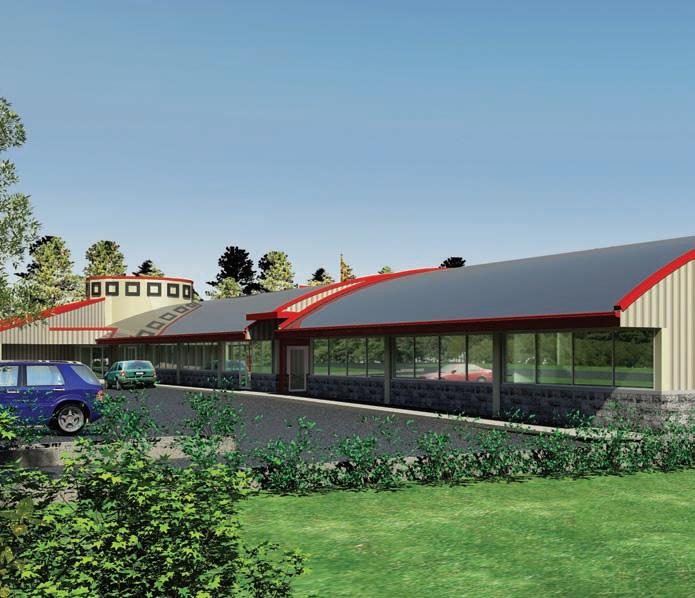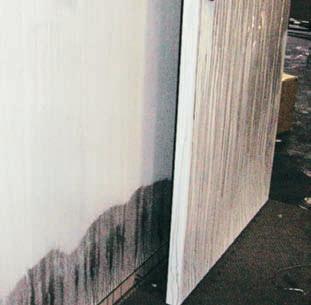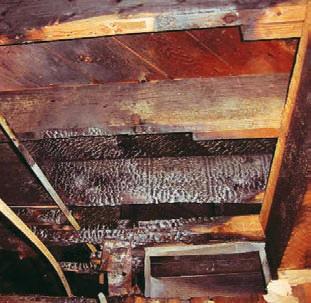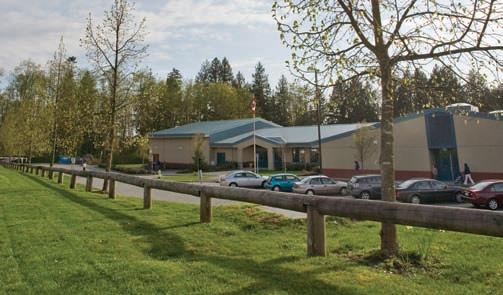
4 minute read
Protecting Our Environment for the Future
BY ART JOHNSON, CR, WLS, CANSTAR RESTORATIONS
As a facilities manager responsible for maintaining buildings that house our future generations of leaders and workforce, a great deal depends on the decisions you make when it comes to proper cleanup after a building suffers damage. Maintaining a safe, healthy and clean environment is critical to ensure young minds and bodies develop into healthy adults.
A number of incidences can occur that may negatively impact this environment and which, as a restoration contractor, we seem to encounter on an almost daily basis. These events must be addressed with an insightful, professional and thorough manner and in a timely fashion. Let's spend a few moments and see why that attention is so important.
As night falls, a broken pipe causes water to flow down the hallway, where, during the day, children laugh and sprint to class. If addressed in a timely manner and the danger quickly re moved, this should significantly reduce its impact; if not, for every hour and day the moisture remains, bacteria begin to proliferate and mould begins to germinate. If the area previously had a flood that wasn't remediated properly, the mould may spawn from the dormant state from which it was left.
With increased numbers of environmentally sensitive young people and teachers attending schools, all of us are required to act more prudently and add additional measures to protect everyone. Even in a freshwater flood situation, after water extraction and the installation of drying equipment, tools like air scrubbers and ultraviolet light air purifying machines, along with containing the areas with poly barrier walls, are integral to the process of revitalizing the school. These measures should become more and more a part of regular water damage scenes to ensure the damage has little or no impact on the precious air quality that must be main-
Garaventa Lifts and Elevators
BC’s Largest Lift and Elevator Showroom
Paul Bryan Nav Chahal
www.garaventaBC.com Toll Free: 1 800 565 6636
Manufacturing in BC since 1974
tained in the occupied areas. If avoiding these measures becomes the norm for simple water damage, we can only imagine the scenario if there is lead paint, asbestos, sewage, or river water involved.
Smoke and fire damage is another area that requires special attention in regard to maintaining or re-establishing good indoor air quality. A number of dynamics occur when a fire moves through a building; those factors depend on the type of fire, whether it be slow-burning or smouldering, fast and furious, or pressurized and convectionbased. The way we address fire and smoke damage requires further understanding and different approaches. If a fire smoulders and is then doused with water, the soot particulate will be large due to incomplete combustion, and it will usually disperse throughout the building through the HVAC system or open doorways and settle on most horizontal surfaces. It is usually easier to clean and deodorize as long as it has not gone on for an extended period of time, not a lot of plastics and oil-based products are involved, and an abundance of water was not introduced. However, it is a different story when it comes to a hot, fast-burning fire, where the situation and dynamics are considerably more complicated. As a fire builds momentum, it requires more oxygen and thus creates greater pressurization and convection, thus facilitating the movement of smoke and residue into areas that may appear to be isolated.
Pressurization will cause smoke to be forced into wall cavities and into ductwork, whether your HVAC system is running or not, and unless it is addressed, will contribute toward an unhealthy indoor environment for a prolonged period of time. These conditions have had negative effects on the health and welfare of many firefighters
who are forced to go into these situations to combat fires and undertake investigations. Over the years, their careers, and for some, their life span, have been reduced dramatically. If this happens to these individuals, we can well imagine the dangers posed for our youngsters and their teachers. The convection associated with a fire will also create its own moisture problems that create real issues for the restoration contractor let alone the school maintenance staff.
As an industry, the study and guidelines for fire, smoke and water damage restoration is very extensive and involved. There exist far too many scenarios and variables when it comes to the reaction and effect these perils have on the built environment and, more importantly, on the contents within them, to even begin to go into the requisite details needed to properly address them. However, fully understanding the need to call in professionals and rely on them for advice will reduce the risks of finding our young ones in an environment that is not conducive to their health and welfare. It is vital to understand the depth of impact these dangers can have on our schools and the effective remediation of them.
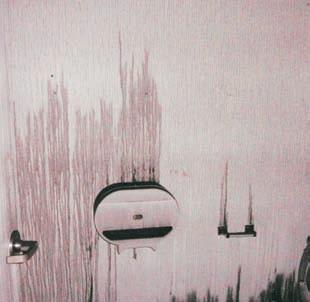
For more information on the standards and guidelines for the remediation of fires and floods the restoration industry has available to them, please visit the IICRC website at www.iicrc.org, or pick up a copy of these guidelines and standards from your local janitorial supply company. You may also call me at (604) 549-0099 or toll free at 1-866-578-3138.
ROOFING CONTRACTORS ASSOCIATION OF BRITISH COLUMBIA
